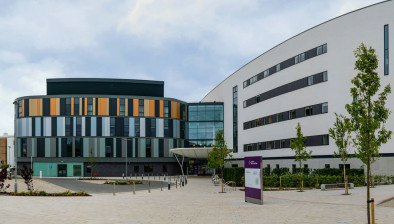NHS struggling to keep up with building repairs

Repairs are needed to almost a third of all NHS Scotland buildings with 50 per cent of the maintenance backlog in some board areas classed as “high risk and significant”, Audit Scotland has warned.
A report by the spending watchdog called NHS in Scotland 2016 found that while the number of buildings needing significant attention has reduced slightly, five per cent still require major investment. Overall, 44 per cent of the NHS estate needs high risk and significant maintenance as of 2015, down from 47 per cent in 2014, it added.
In 2015, the outstanding maintenance required to keep the NHS estate across Scotland up to a good standard amounted to £898 million, over £100m (13 per cent) more than the previous year.
High-risk and significant maintenance requirements reduced to 44 per cent overall in 2015, compared to 47 per cent in 2014. However, in some boards, particularly in NHS Dumfries and Galloway, Greater Glasgow and Clyde, and Tayside, it increased. In five boards, the level of high-risk and significant backlog maintenance is over 50 per cent (NHS Dumfries and Galloway, Greater Glasgow and Clyde, Lothian, Tayside and Shetland). Most of these boards have new properties recently completed or under way and are rationalising their property portfolios.
Audit Scotland says NHS boards are planning around £2.8 billion investment over the next five years, but much of this relates to property, medical and IT equipment and vehicles.
Of the total of £1.1bn planned for investment in major projects, the majority of this (70 per cent) is for new hospitals.
The capital budget will more than double from £202.5m in 2015/6 to £494.5m in 2016/7, but the report says the increase will largely be spent on four new facilities. The Royal Hospital for Sick Children and Department of Clinical Neurosciences in Edinburgh, the Dumfries and Galloway Royal Infirmary, the new Scottish National Blood transfusion service centre and a new hospital in Orkney will together cost £215m, after which the Scottish Government has said the capital budget will drop again.
The watchdog also called for “a clear national strategy” for capital investment that will support a shift in the balance of care.
It said: “Boards can use revenue funding for major projects, rather than capital funding, to spread costs over a long period of time, such as non-profit distributing (NPD) projects. However, revenue budgets are under increasing pressure.”
Caroline Gardner, Auditor General for Scotland, said: “Major challenges lie ahead for the NHS in Scotland. There are growing pressures on health boards which are struggling to juggle service delivery and progressing major reform whilst also managing considerable financial challenges.
“The Scottish Government has had a policy to shift the balance of care for over a decade but despite multiple strategies for reform, NHS funding has not changed course. Before that shift can occur, there needs to be a clear and detailed plan for change, setting out what the future of the NHS looks like, what it will cost to deliver and the workforce numbers and skills needed to make it a reality.”











